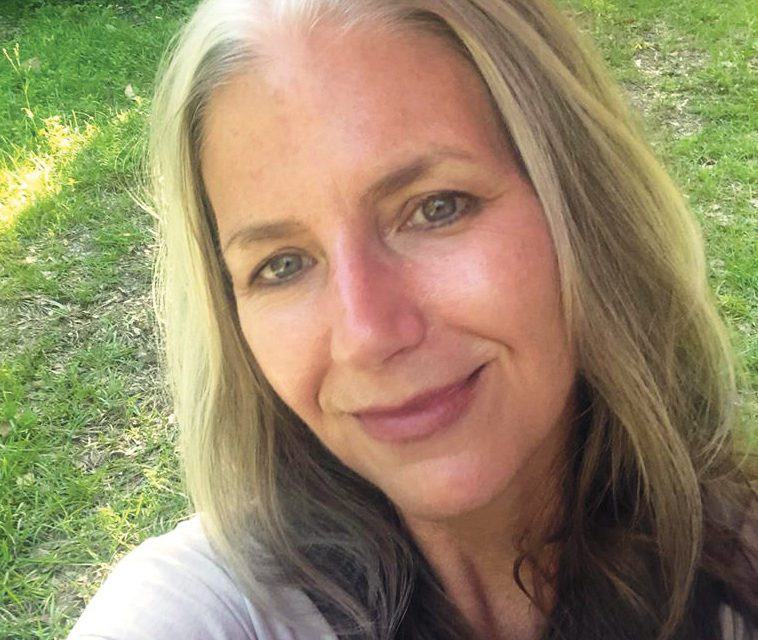 By Margaret Evans, Editor
By Margaret Evans, Editor
I barely have the energy to write this column, much less the inspiration. I am in a rut to end all ruts.
August is my traditional rut season anyway, but the rut seems so much deeper this year. Last issue, I wrote about the ‘double dog days’ of summer. Since then, those double dog days have doubled down.
The pandemic grinds on, confounding us every step of the way . . .
Parents struggle to choose an educational “option” for their kids – online, in person, or some hybrid of the two . . .
Rising college freshmen – including my beloved daughter – contend with one disappointment after another, wondering if they’ll ever actually matriculate on campus . . .
An article in Forbes asks, “When will life return to normal?” and answers, “Never,” elaborating on all the many ways our economy – and our very culture – will be permanently transformed by this pandemic . . .
On the nightly news, most of what we hear about – besides Covid-19 – is our current Black Lives Matter moment, which consists of inspiring peaceful protests where brave, committed activists are not spreading the virus (if you’re watching MSNBC) or violent, destructive riots where lawless thugs are spreading the virus (if you’re watching Fox News).
On social media – which is basically the only thing “social” happening for most of us – the mask wars rage on, the hydroxychoroquine question lingers, Obama’s eulogy of John Lewis was either “shameful and disgusting” or “masterful and inspiring,” depending on whose page you’re reading, and, in short, Americans continue to behave like two warring tribes with no shared DNA.
Meanwhile, in my neck of woods: The F-35 pilots from MCAS – bless their hearts – have a new practice schedule, so the sound of freedom now roars over our neighborhood earlier and more often. (It is a sad truth that gratitude for our patriotic flyboys and girls does not protect one’s ears or nerves. Alas.)
As I write, there’s a tropical storm with an unpronounceable name (I’m told it’s not like the biblical prophet) headed for our general vicinity, which might have blown through as a hurricane by the time you read this.
And it’s too dadgum hot outside.
All things considered, though – for one must always consider all things – life could be so much worse, and I am a wretched ingrate for complaining. I should be counting my blessings instead: My healthy family. The roof over my head. The food in my pantry. The remarkable usefulness of Zoom.
And, of course, The Office.
I’m not sure how it happened exactly, butThe Office has become our cultural comfort food during this pandemic. My family and I tend to watch two or three episodes on Netflix every night, over dinner. (Yes, we’re a TV tray family. I’m not proud.) I’d like to blame our daughter, who became obsessed with the show when she was about 15 and has been bugging us to watch ever since, but I’ve grown to love The Office just as much as she does. And I’m not remotely sure why.
The show is patently absurd. Is it even funny? It must be, ‘cause I’m laughing, but again, I’m not sure why. The characters can be terribly unlikable. So unlikable you can’t help loving them. Does that even make sense? Does anything about adoring The Office make sense?
For the uninitiated – if you exist – the show is set in the office of Dunder Mifflin, a fictional paper company in Scranton, PA, and its characters are the people who work there. The office is drab and mundane, the work of selling paper is drab and mundane, the lives of the Dunder Mifflin employees are drab and mundane.
And the show is simply fabulous.
Apparently, it’s not just my family who are addicted to The Office. A little Googling revealed that the show, while a cult hit during its original run, has become a bona fide sensation in its second life on Netflix, and not just with adults. Teens and tweens can’t get enough of The Office. They chat about it online, make TikTok videos about it, name their pets after its characters, and buy tons of Office merchandise. My daughter and I were recently shopping for clothes at Urban Outfitters in Savannah and she couldn’t resist purchasing a Dwight Schrute bobble head strategically placed at the checkout counter.
With its bone-dry humor and all-adult cast, it’s hard to understand this youthful enthusiasm for The Office, unless you consider – as I often have – that Generation Z is strangely nostalgic for periods they don’t actually remember. And even though it’s not very old – it first aired fifteen years ago and ended six years ago – there is something warmly old-fashioned about The Office. It’s reminiscent of a simpler time, a slightly less automated time, before social media consumed our lives and lots of us started working from home. A time of handwritten call sheets, cheesy bulletin boards, water cooler gossip, lame office parties, boring HR retreats, and bad coffee. Sigh…
Also, despite its stodgy, whitebread setting, the show feels mildly – deliciously –transgressive, reminding us of a time not so long ago when we actually liked transgressive. When transgressive was fun and cool. Before transgressive could bring a Twitter mob to your door, and get you canceled.
Frankly, I’m not sure you could even make this show today. That’s how quickly things have changed. What felt edgy, hip and progressive even six years ago, when the show ended, would now be judged offensive, over the line, I think, by our cultural powers-that-be.
There are race jokes on The Office. Gay jokes. Jokes about women. Typically, the butt of the joke is not the black person or the gay person or the woman, but the dunderheaded white guy fumbling his words. In fact, much of the humor in The Office comes at the expense of sincere, but deeply flawed and often ridiculous, human beings trying hard to navigate the rising, roiling waters of political correctness, and failing miserably. The minority employees at the office are typically in on the joke, and usually come off looking smarter and better than everybody else.
But I don’t think people make distinctions like that anymore. Not in our current moment, anyway. In our current moment, nuance and subtext mean very little, good intentions are worthless, and mercy is scarce.
But it’s not like that at The Office. At Dunder Mifflin, people wear their various levels of awfulness on their sleeves, and we love them for it. We watch them preen and strut and strive, only to see them fall and fail and utterly embarrass themselves. We watch them irritate, offend, and repel each other, but we also see them console, forgive, and redeem each other. The show is restorative, I think, not just because a good laugh almost always is, but because under all its layers of silliness, obscenity, and wrong think, there is a foundation of love. The show loves its dreadful characters, and those dreadful characters love each other. If they can do it – even Dwight Schrute! – surely we can, too.
Wow. I had no idea where this column was going when I started. Did I really just try to spin serious social commentary – with a quasi-religious angle – from The Office? Oy.
It’s rut season, and I’m grasping at straws. I promise to do better once the weather cools off, the pandemic ends, and life gets back to normal.
Oh, wait . . .









